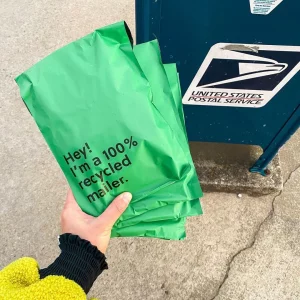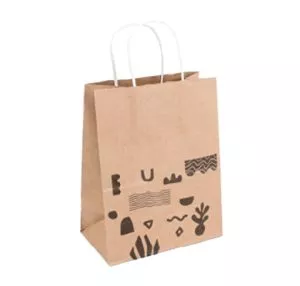How Paper Bags Are Made: A Sustainable Journey from Trees to Shopping Bags
Paper bags are a common sight in our daily lives, but have you ever wondered how they’re made? Understanding the paper bag manufacturing process reveals not only the craftsmanship behind these everyday items but also their importance in promoting sustainable packaging. This article takes you through the fascinating journey of paper bag making, exploring the materials, processes, and benefits of choosing paper over plastic.
Table of Contents
What Materials Are Used to Make Paper Bags?
The primary material used in making a sac en papier is, unsurprisingly, paper. But not just any paper—high-quality paper types are selected to ensure durability and functionality.
Types of Paper Used:
- Kraft Paper: Known for its strength, kraft paper is a common choice.
- Recycled Paper: Utilizing recycled paper supports sustainability efforts.
- Brown Paper: Often used for its natural appearance.
These papers are chosen based on the intended use of the bag, whether for shopping bags, grocery bags, or specialized packaging needs.
How Does the Paper Bag Manufacturing Process Begin?
The manufacturing process of a paper bag starts with large rolls of paper. Here’s a step-by-step overview:
- Paper Roll Feeding: The paper roll is mounted onto the machine.
- Printing (Optional): If the bags require branding or designs, the paper is printed first.
- Folding and Gluing: The paper is folded into the desired bag shape, and adhesive is applied to secure it.
- Cutting: The continuous paper is cut into individual bags.
This process is efficient, allowing for mass production while maintaining quality.

What Is the Role of Kraft Paper in Paper Bag Production?
Kraft paper plays a significant role due to its durability and eco-friendly properties.
- Strength: Ideal for carrying heavy items without tearing.
- Durabilité: Made from wood pulp through the kraft process, it’s a sustainable packaging option.
- Versatility: Suitable for both brown paper and white kraft paper bags.
Using kraft paper aligns with the growing demand for sustainable and eco-friendly products.
How Are Handles Added to Paper Bags?
Adding handles enhances the functionality of paper shopping bags. There are two main methods:
- Punched Handles: Holes are punched into the bag, creating a simple handle.
- Attached Handles: Separate handles made from paper, rope, or ribbon are glued to the bag.
The production process ensures that handles are securely attached, allowing the bag to carry heavier items.
Why Choose Paper Bags Over Plastic Bags?
The choice between paper and plastic bags impacts the environment significantly.
Advantages of Paper Bags:
- Biodegradable: Paper bags decompose naturally, reducing environmental pollution.
- Made from Renewable Resources: Paper is produced from trees, which can be replanted.
- Recyclable: Most paper bags are recyclable, promoting a circular economy.
- Sustainable Packaging Solution: Supports efforts to reduce plastic waste.
Switching to paper bags is a step towards more sustainable packaging practices.
What Are the Different Types of Paper Bags?
Paper bags come in various shapes and sizes to meet different needs.
- Flat Bags: Ideal for magazines, greeting cards, and flat items.
- SOS Bags (Stand-On-Shelf): Common in grocery stores for items like fruits and vegetables.
- Shopping Bags: Equipped with handles, used in retail for clothing and accessories.
- Customized Paper Bags: Tailored to specific brand requirements, often used for promotions.
Understanding the types helps businesses choose the right packaging solutions for their products.

How Are Paper Bags Disposed of and Recycled?
Disposal and recycling of paper bags are straightforward.
- Recycling: Paper bags can be placed in recycling bins.
- Composting: They can be composted in industrial facilities or home composts.
- Reusability: High-quality paper bags can be reused multiple times before disposal.
Proper disposal ensures that the environmental benefits of using paper bags are fully realized.
Who Manufactures Paper Bags?
Numerous manufacturers specialize in producing paper bags.
One such example is Everthan Packaging, offering a range of custom paper bag options to suit different business needs.
These manufacturers focus on quality, sustainability, and customization, providing businesses with reliable packaging.
How Can Custom Paper Bags Enhance Your Brand?
Using custom paper bags offers several benefits for businesses.
- Brand Visibility: Printing logos and designs increases brand recognition.
- Customer Experience: High-quality bags enhance the shopping experience.
- Eco-Friendly Image: Demonstrates a commitment to sustainability.
Custom paper bags are not just packaging; they are a marketing tool that conveys a brand’s values and quality.
Conclusion: Embracing Sustainable Packaging
The journey of a sac en papier from raw material to finished product is a testament to innovation and sustainability. By choosing paper over plastic, we support environmentally friendly practices that benefit both businesses and consumers.
Key Takeaways:
- Paper bags are made using materials like kraft paper and recycled paper.
- The manufacturing process involves feeding paper rolls, printing, folding, gluing, and cutting.
- Kraft paper provides strength and is a sustainable choice.
- Adding handles enhances the functionality of paper shopping bags.
- Opting for paper bags over plastic supports environmental sustainability.
- Different types of paper bags cater to various needs.
- Proper disposal and recycling of paper bags maximize their environmental benefits.
- Custom paper bags can boost brand visibility and customer satisfaction.
By understanding how paper bags are made and the benefits they offer, we can make informed choices that promote a more sustainable future.


